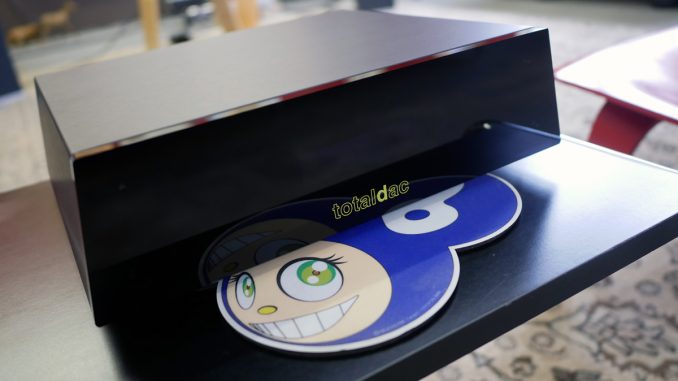
Imagine you are walking down the street on your way to your favorite restaurant. As you approach the front door of Chez Écoute, the door recedes. The closer you try to get to it, the door continues its backward slide remaining just out of reach. This is the danger of being a hifi reviewer.
Anyone who has read the things I’ve written about DACs these past 7 or so years will know that at the top of my DAC heap sits every DAC from Vincent Brient’s totaldac along with those from dCS. The next step down from on high is not a step at all—it’s a drop-off.
Let’s get the easy part of the questions out of the way first—What is a streamer? A streamer takes an Ethernet (or WiFi) input and converts it into digital audio output(s). This way, you can turn any DAC into a network player. This means you can stream music from streaming services, like Tidal and Qobuz, and network-attached music storage through your hifi. If you partake in a streaming service, once you add a streamer to your hifi system, you immediately have access to millions of albums.
I know most everyone knows this stuff but in the off chance this is news, I hope you’re asking yourself, “Why wouldn’t I want this?” (Hint: you do)
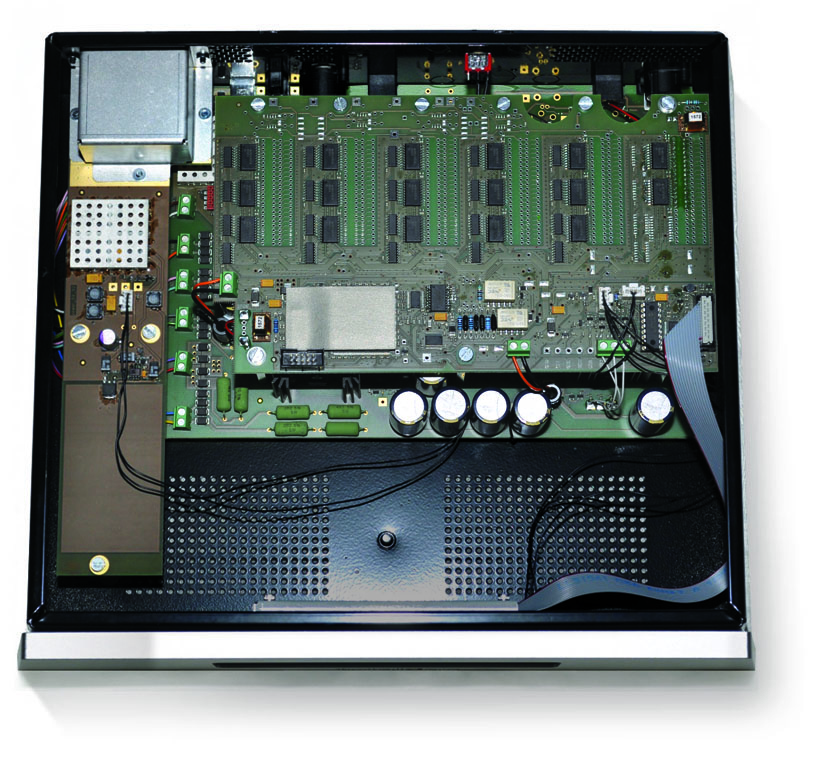
The totaldac d1-streamer is three products in one—a streamer, a reclocker and a digital preamplifier. Why include a reclocker? My answer is network audio is fraught, yes fraught, with noise. This noise can negatively impact the analog output of your digital to analog converter. A reclocker’s main goal, its special purpose, is to remove this noise thus improving digital signal quality (i.e. it removes jitter), before sending it on its way to your DAC. [footnote 1] Based on experience, when we strip away noise in network audio, we are left with more of the music—more nuance, improved dynamics, richer tone colors, and a clearer picture of the space of the recording, all adding up to a more believable presentation.
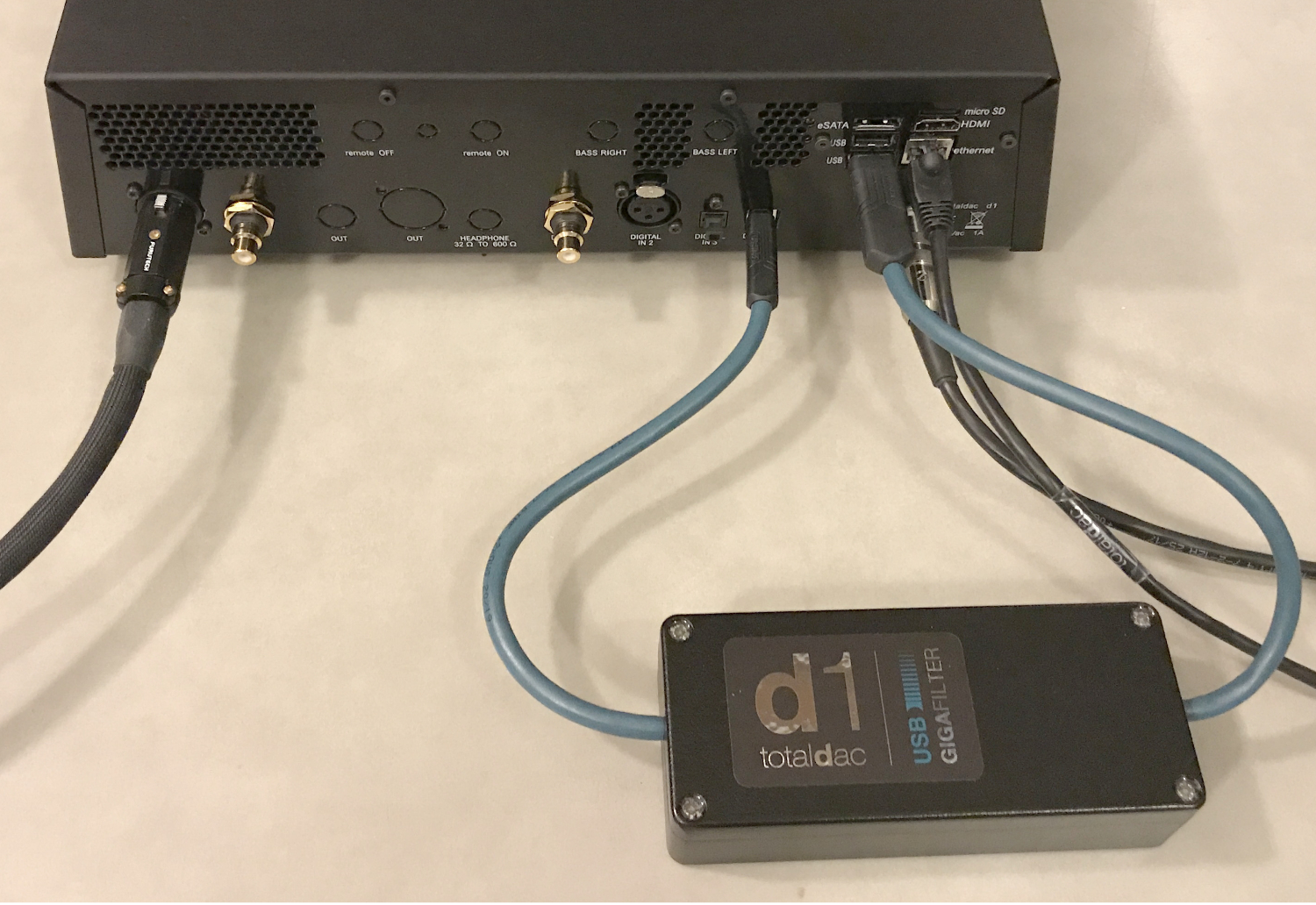
The d1-streamer’s internal clock employs FIFO memory, it buffers the signal before passing it along. The signal also runs through a “Totaldac USB GIGAFILTER loop”, a USB input and output on the rear of the streamer which you connect to each other using a USB cable. I used the totaldac USB GIGAFILTER / cable, which adds another level of noise reduction. Also mounted on the back of the unit are the Ethernet input, digital inputs (Coax S/PDIF, Toslink, AES) for connecting other digital sources (these inputs also travel through the reclocker), a microSD card / slot which houses the unit’s firmware, and the power inlet for the included external power supply. The eSATA and HDMI connections are not used by the d1-streamer, a tip of the hand to totaldac’s use of the same chassis for their products.
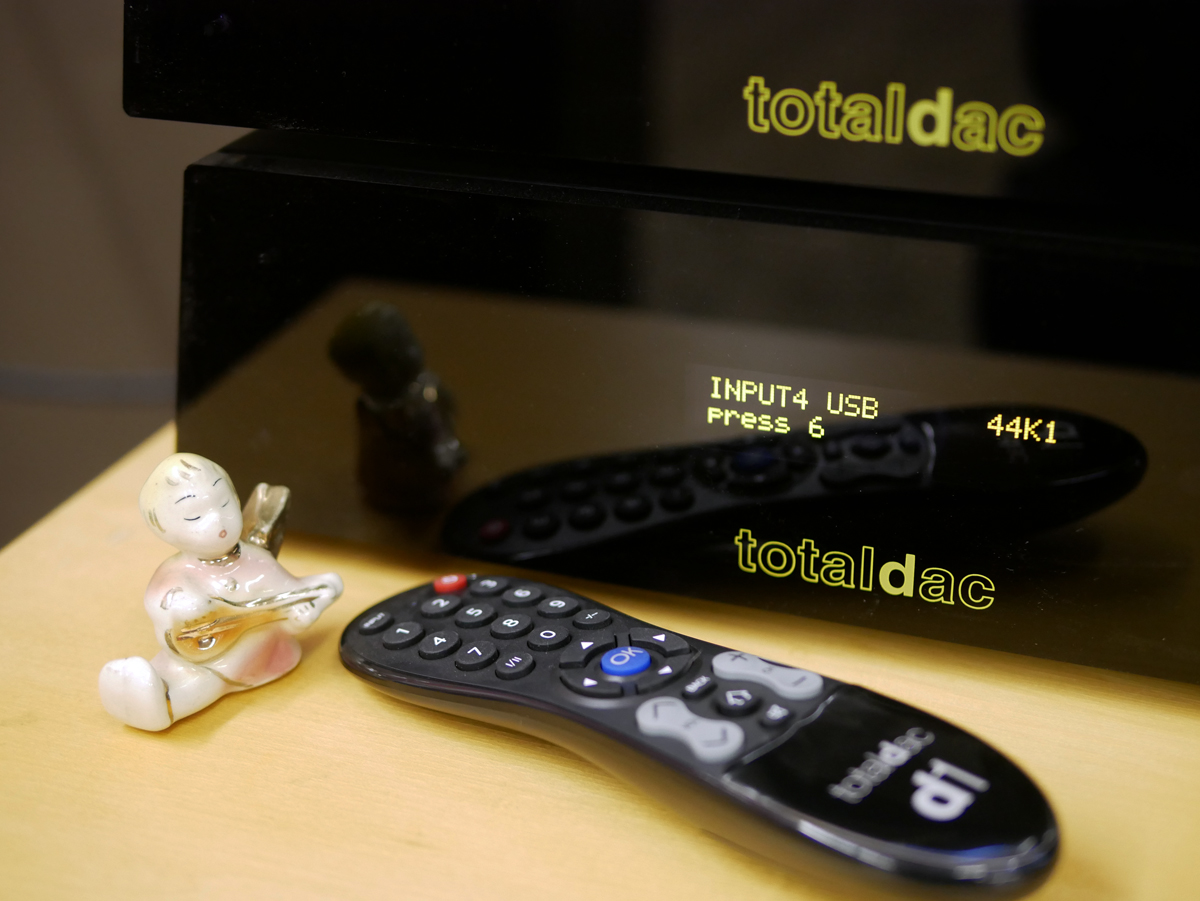
The included remote allows for a number of functions including Phase (normal or inverts absolute phase), Earth (the signal ground is connected to the earth or the signal ground and the earth are isolated), Display (on/off), and DSD > PCM (on/off). The remote also allows for input selection, leave this set to “USB”, and volume up/down for controlling the unit’s internal digital volume. This remote can also be set to operate just the d1-streamer, just a totaldac DAC, or both.
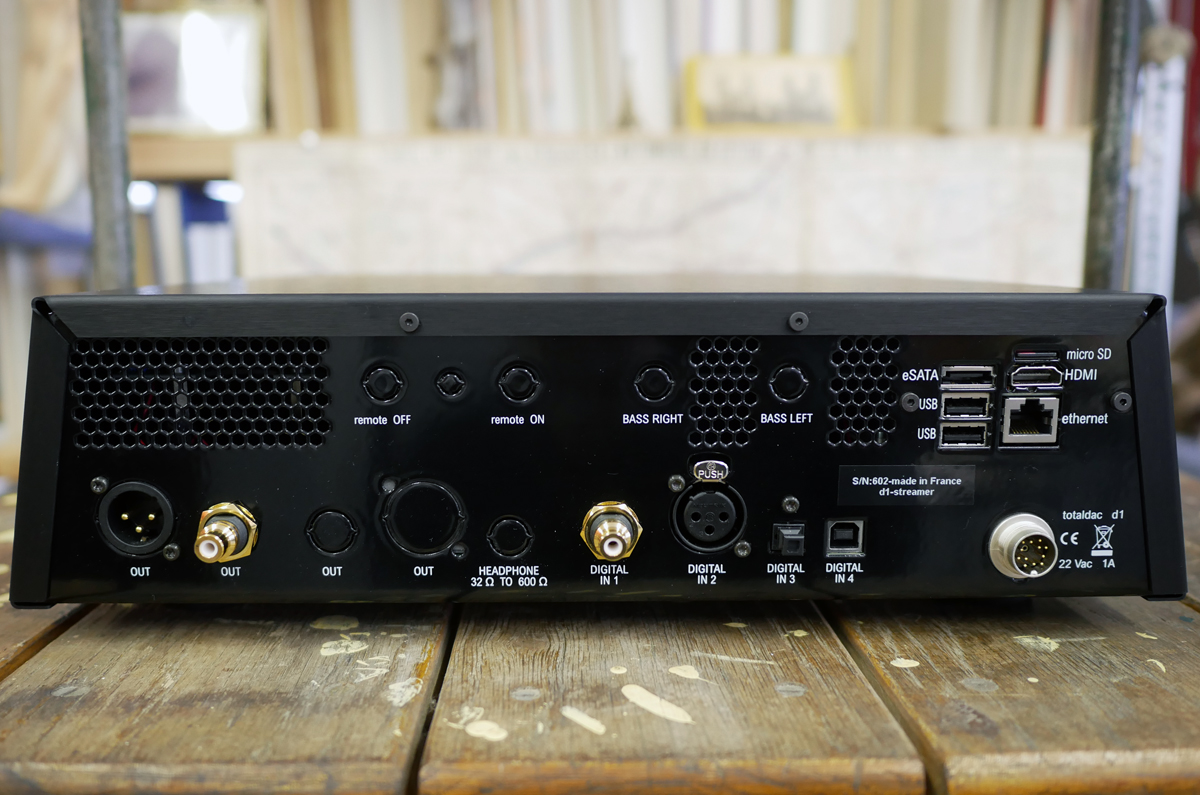
The d1-streamer is RoonReady and also supports the UPNP/DLNA/openhome protocol, Airplay, and Network Audio Adapter (NAA) for use with HQPlayer. The d1-streamer passes PCM resolutions up to 24/192 and DSD via DoP. The unit can also convert DSD to PCM if your DAC doesn’t do DSD.
For the duration of this review I used the d1-streamer as Roon endpoint while sending its bits via AES to my totaldac d1-seven. I also left its volume control in the 0dB position as I prefer to use the remote that’s part of my Leben CS600 integrated amplifier.
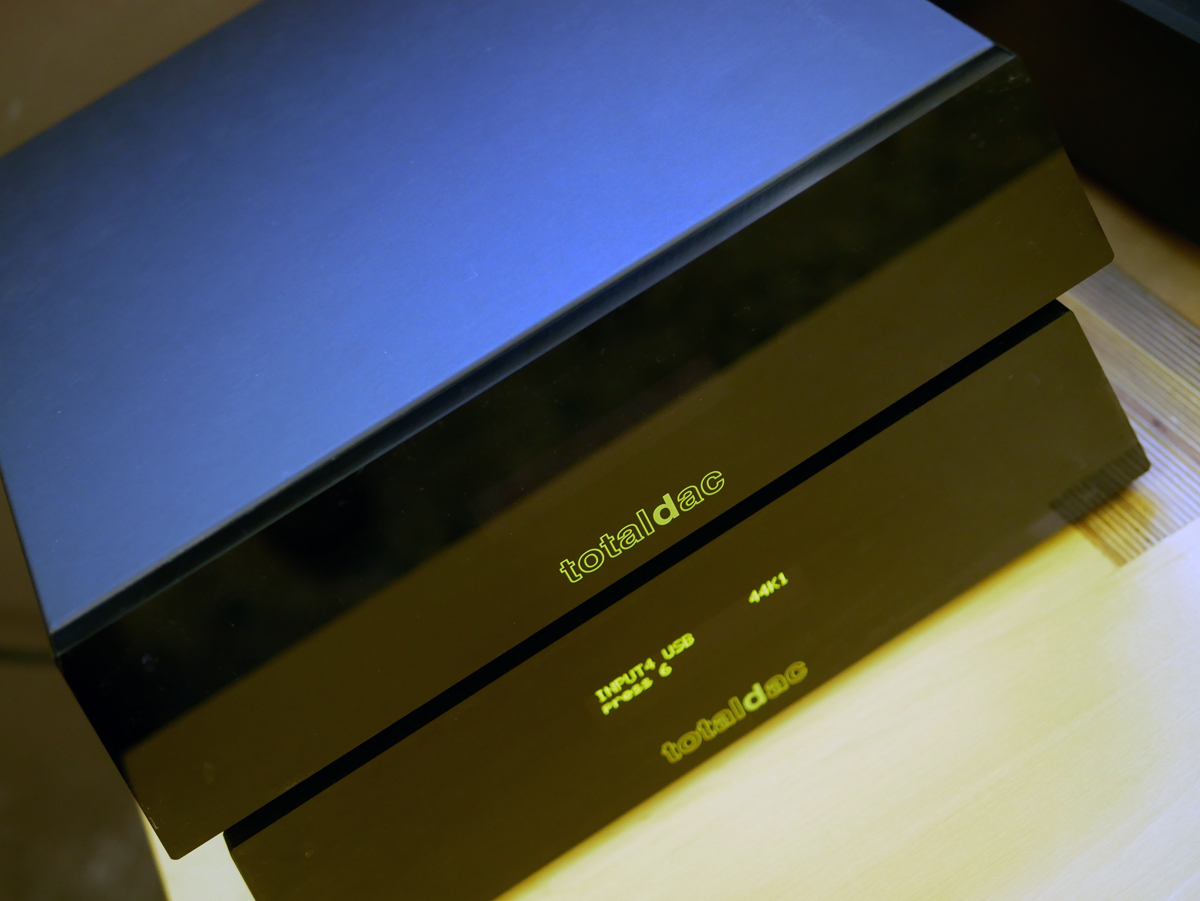
We’ve arrived back at that door. I’ve been living with and loving my hifi for more than 2 years—the DeVore Fidelity gibbon X, Leben CS600 integrated amplifier, totaldac d1-seven, and the dCS Network Bridge which has bested every other streamer I’ve had in-barn by a wide margin (full system details). I have spent countless (literally) hours in this system’s warm and deep musical embrace. It is a pleasure machine and one capable of revealing damn near everything I value from the experience of listening to music on the hifi. When I return home from hifi shows, after hearing all manner of systems, I always breath a sigh of relief when I sit in my comfortable red Eames LCW and tap play on my iPad Roon remote. Home, is where the art is.
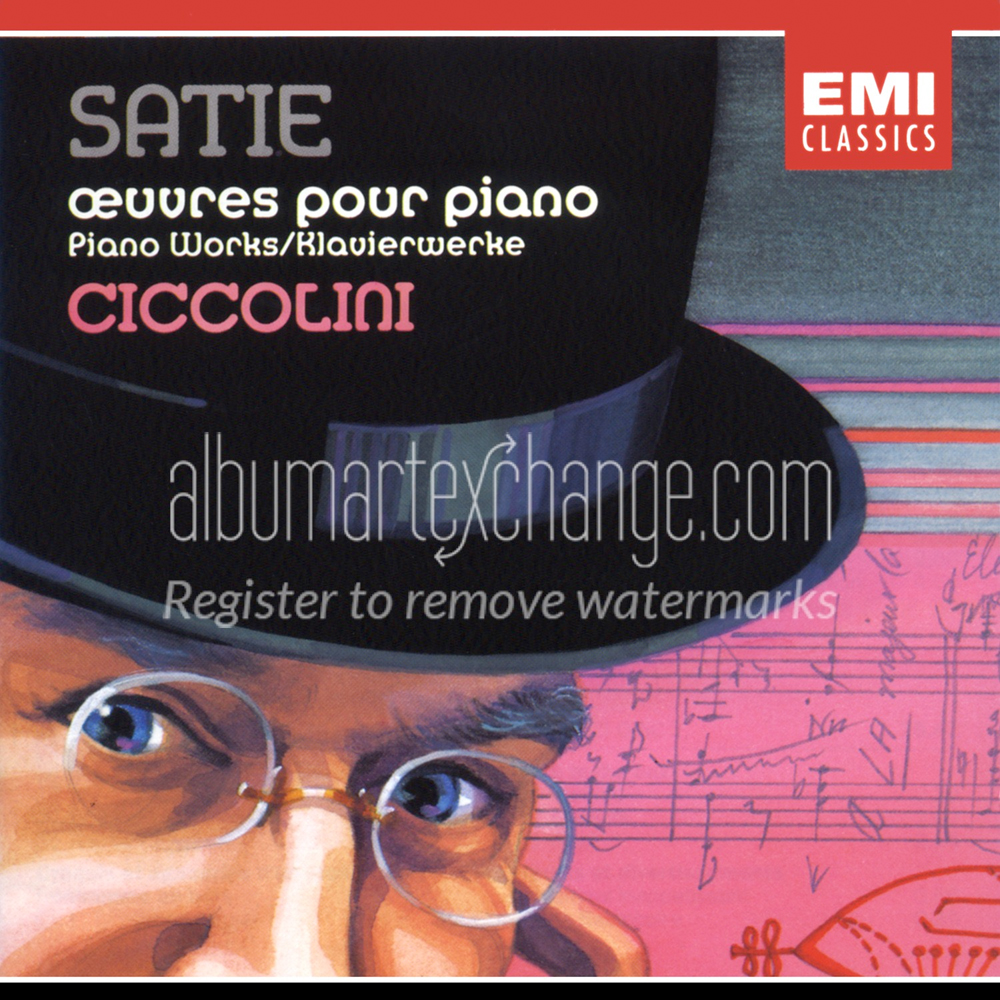
So you could imagine my surprise when, after inserting the totaldac d1-streamer, I tapped play only to find that my hifi now sounded that much more human. Typically, I’ll continue playing the music I was playing before the change when inserting something new into my system but the d1-streamer damn-near demanded I jump directly to those tracks I know like the back of my hand, hands change btw, when I want to hear how a given piece of kit has changed the sound of music.

Nick Cave’s brokenhearted pleading vocals on “Love Letter” from No More Shall We Part had more heartbreak and desire than I’m accustomed to hearing. Think more human. The panoply of acoustic instruments on the Rolling Stones “Lady Jane” had more pluck and bloom, more difference, and ultimately a more believable sound. The degree to which Bob Dylan’s “Meet Me In The Morning” sounded like a real thing, a person singing and playing guitar, was enhanced to a degree I haven’t heard in Barn. Until now. Satie’s piano works as performed by Aldo Ciccolini are a study in subtlety where time, timing, and the spaces between the notes contribute to the spare striking beauty of these works. With the d1-streamer in my system, there was more gravitas, more tension, and more sweetness conveyed through Ciccolini’s hands on piano.

Crazy complex madness-inducing music like Marc Ribot’s “Midost” from his Ceramic Dog outing was portrayed with a dimensional clarity and real life-ness from the wee smallest bits to the biggest, boldest, badass blasts including a very fleshy bold-as-bass bass, making for an exhaustively physical edge-of-your-seat ride. Another favorite ‘revenge’ song, it builds like the original Mad Max movie, Grinderman’s “When My Baby Comes” was imbued with more impending danger and release than I’ve heard, save for seeing this band of madmen live.
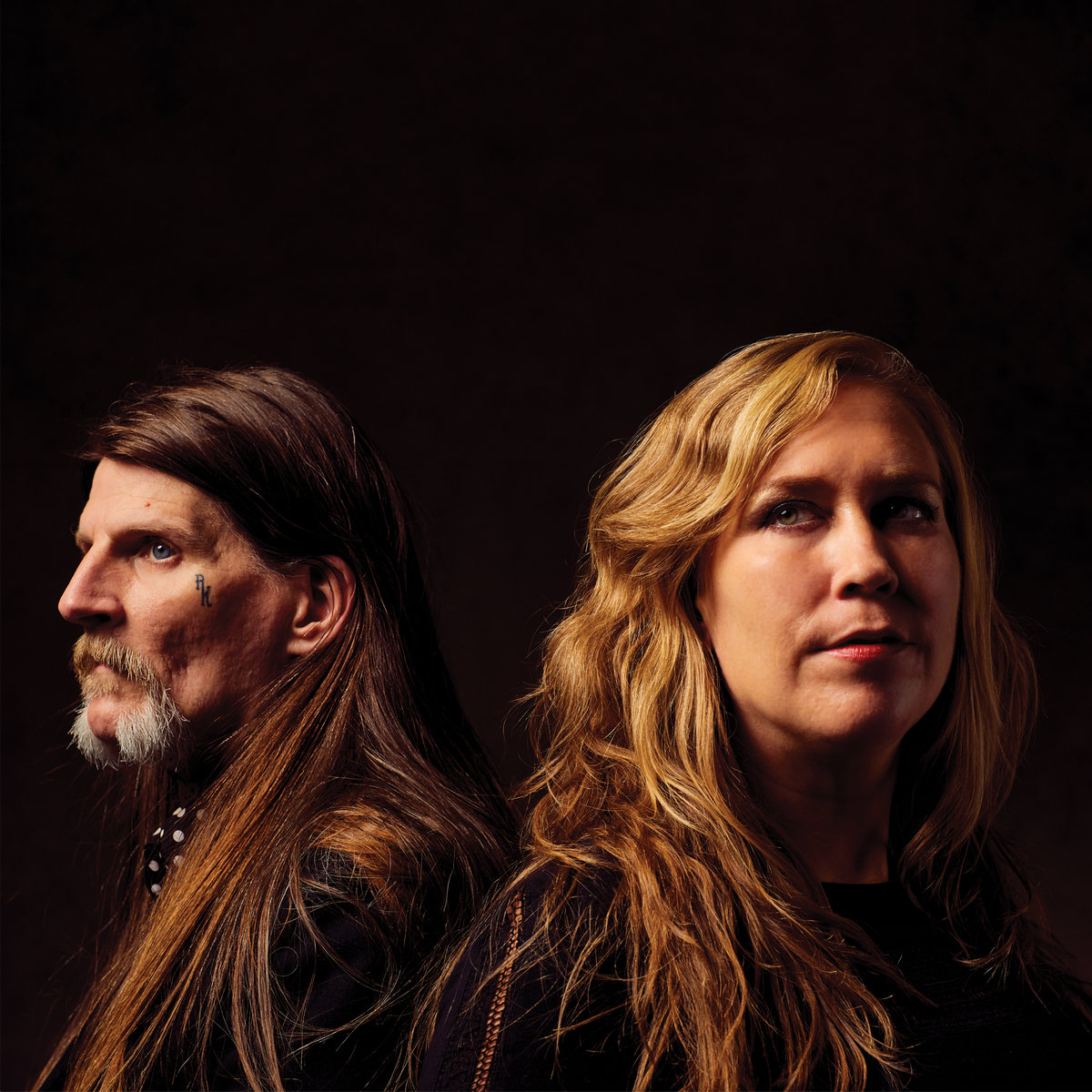
Taking a step back from the component level, I’m of the opinion that streamers do not have a sound of their own. Rather, they allow the attached DAC to reveal more or less of what it has to say about the music played through it. My dCS Network Bridge allows my totaldac d1-seven to speak with great authority, clarity, and beauty. The totaldac d1-streamer allows the d1-seven to speak with greater humanity.
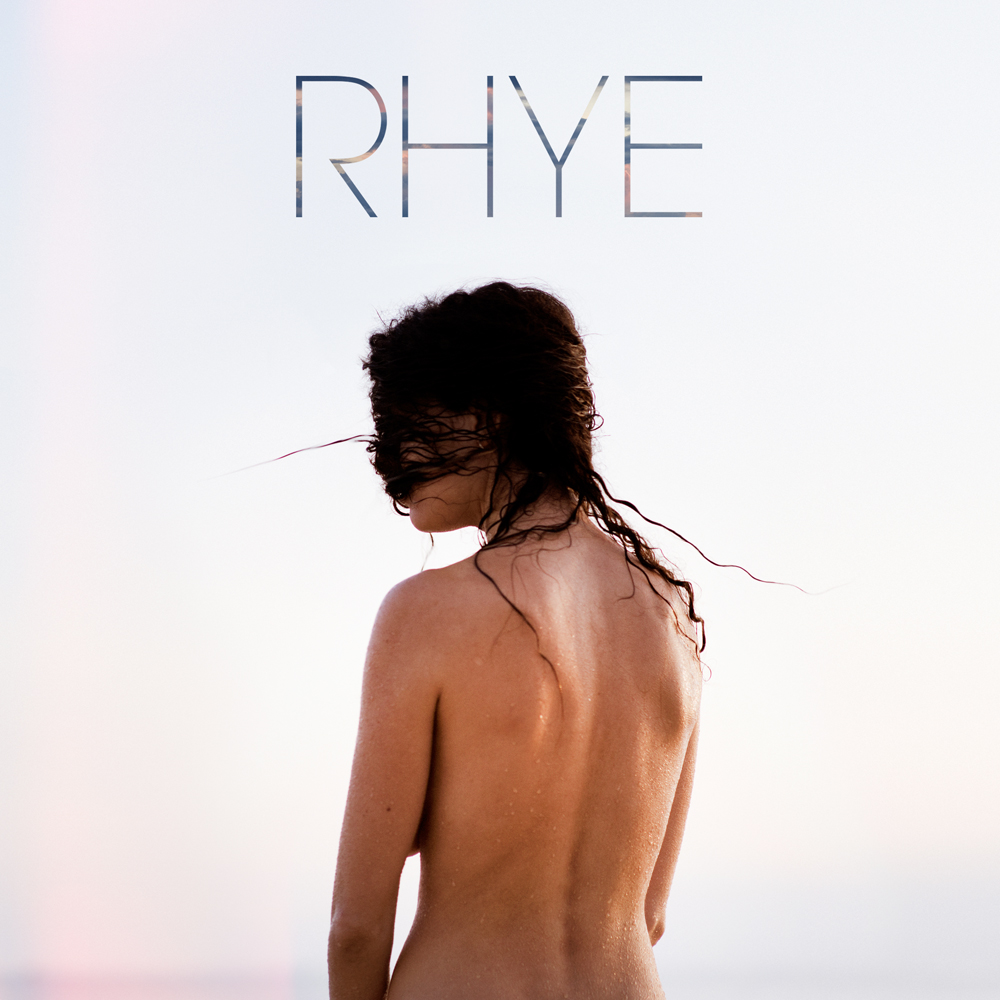
Once I got over the familiar-track-playlist-turned-all-shiny-&-new, I let my interests and Roon Radio do the walking. And I found that this revealing of more, this greater sense of the human, touched everything. It’s as if a little spirit had been sent to sprinkle magical musical dust on every bit before it hit my ears, adding more dimension, weight, color, and flesh. Music hovered and quivered with shimmering source-defying presence.
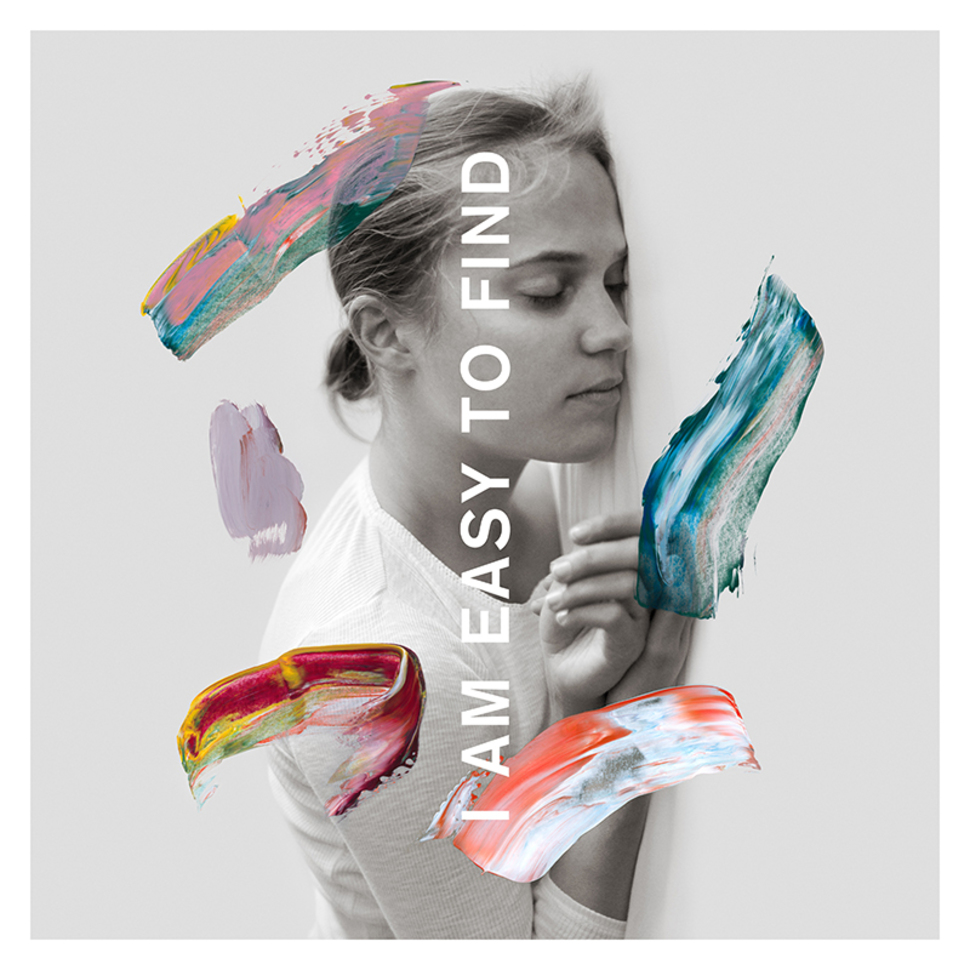
Nearing the end of review-writing time, Vincent suggested I try moving my GigaFOIL INLINE Ethernet Filter from being in-line between the router and d1-streamer to being in-line between the router and my sonicTransporter i5 server (its sole purpose is to run Roon Core). Well I’ll be dipped in…damned if this change didn’t also improve overall system performance, albeit in a more subtle manner. This improvement mainly added a greater sense of clarity and I’d assume that the totaldac USB GIGAFILTER, which was being used for the d1-streamer’s reclocker circuit, was all the filtering I needed on the streamer side. In network audio, everything matters.
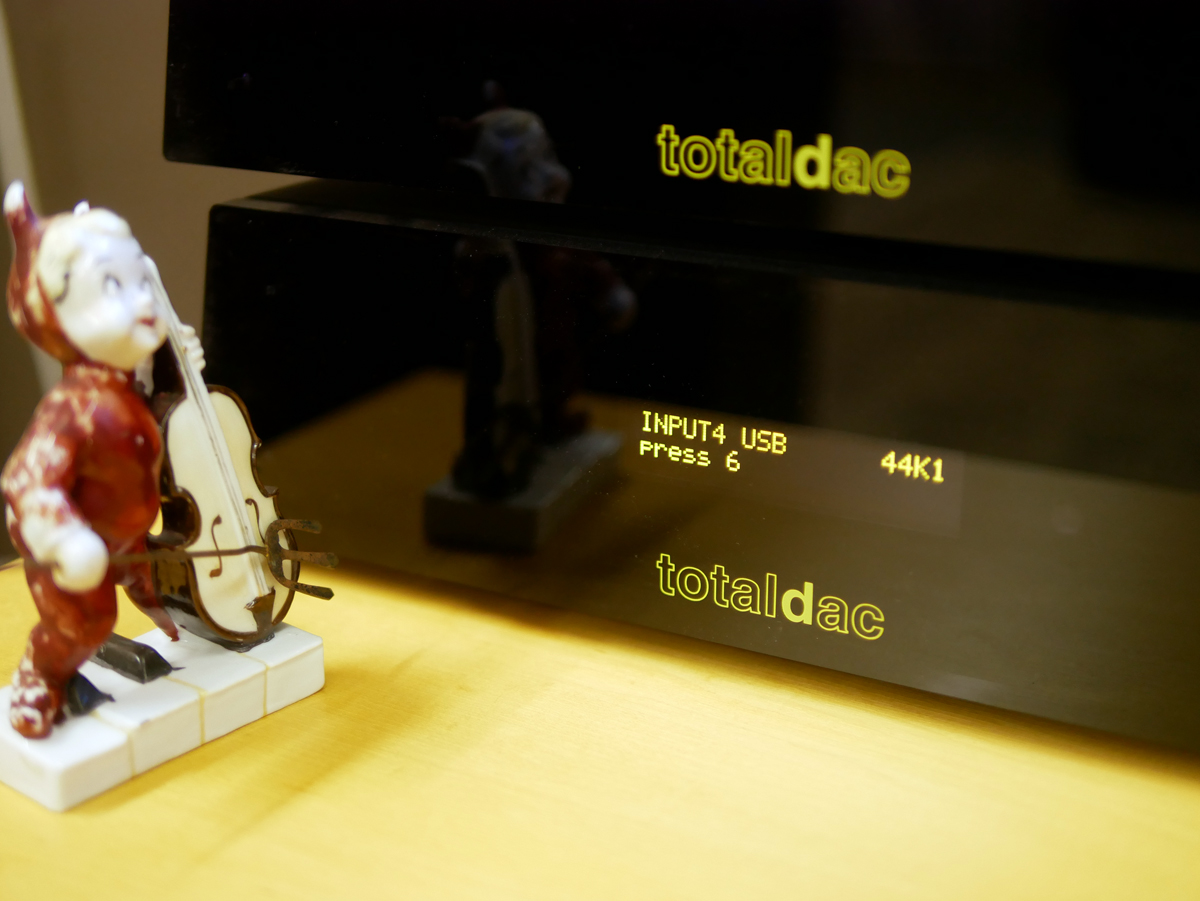
In the end I’m talking about a more convincing, more corporeal experience when listening to my system with the totaldac d1-streamer in it. These changes have nothing to do with hifi and everything to do with music. Nothing to do with anything abstract, everything to do with everything that lends itself to the sense of the real when it comes to listening to music on the hifi.
While I cannot speak to how the totaldac d1-streamer will fit with every DAC in the known universe, I can say two things—in my experience streamer performance is transportable although the end result will depend on the attached DAC/system, and I can say with certainty that if you own and enjoy a totaldac DAC, there’s much more waiting for you behind this door. If the d1-streamer is within your reach, grab it.

1. If any of this sounds unreasonable, Google “noise in mixed signal systems” (mixed signal systems contain digital and analog circuits) which should get you on your way toward understating what’s at play when it comes to network audio and noise.
totaldac d1-streamer
Price: 5990euros incl VAT in Europe, 5500euros excl VAT out of EU
Specifications
totaldac
[email protected]
+33 2 90 02 11 39

